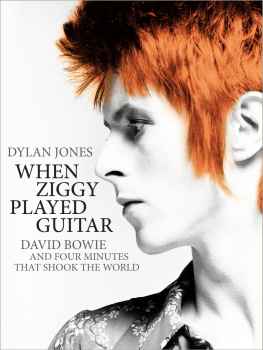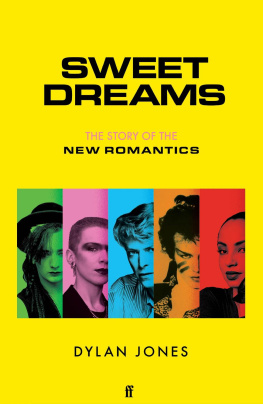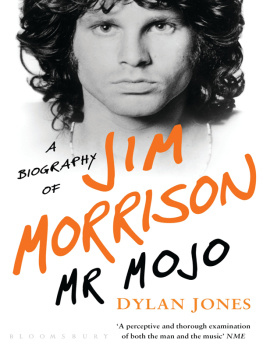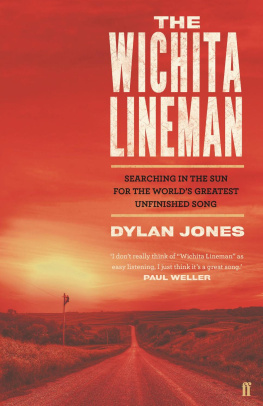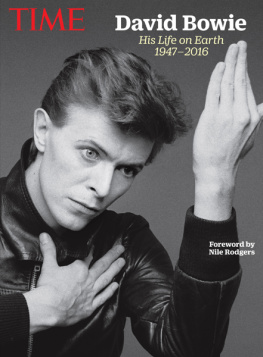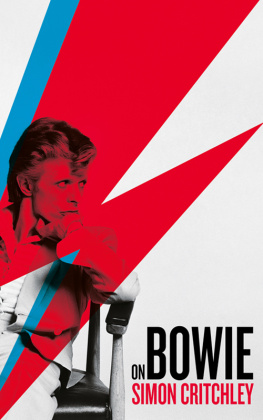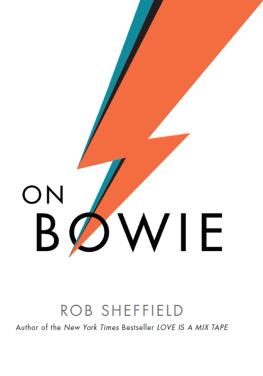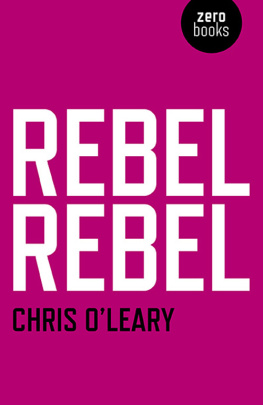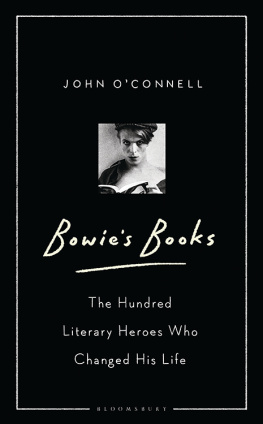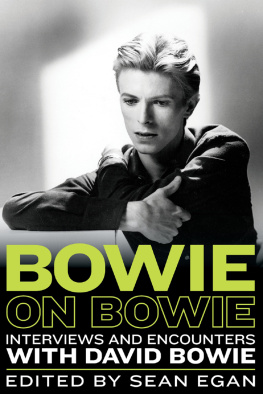CONTENTS
I Think I Saw You In An Ice-Cream Parlour, Drinking Milk Shakes Cold And Long
Didnt Know What Time It Was, The Lights Were Low
Lady Stardust Sang His Songs, Of Darkness And Disgrace
Let All The Children Boogie
When The Kids Had Killed The Man I Had To Break Up The Band
Press Your Space Face Close To Mine, Love
About the Book
And then there was David Bowie, the uber-freak with the mismatched pupils, the low-tech space face from the planet Sparkle. 6 July 1972 was Bowies third appearance on TOTP but this was the one that properly resonated with its audience, the one that would go on to cause a seismic shift in the zeitgeist. This is the performance that turned Bowie into a star, embedding his Ziggy Stardust persona into the nations consciousness.
With a tall, flame-orange cockade quiff (stolen from a Kansai Yamamoto model on the cover of Honey), lavishly applied make-up, white nail polish, and wearing a multi-coloured jumpsuit that looked as though it were made from fluorescent fish skin (chosen by Ziggy co-shaper, the designer Freddie Buretti), and carrying a brand spanking new blue acoustic guitar, a bone-thin Bowie appeared not so much as a pop singer, but rather as some sort of transcendent alien, a concept helped along by the provocative appearance of his guitarist, the chicken-headed Mick Ronson, with both of them unapologetically sporting knee-length patent leather wrestlers boots (Bowies were red). Most people are scared of colour, Bowie said later. Their lives are built up in shades of grey. It doesnt matter how straight the style is, make it brightly coloured material and everyone starts acting weird.
Suddenly Bowie a man called Alias had the world at his nail-varnished fingertips, and in no time at all he would be the biggest star in the world.
About the Author
Dylan Jones is the multi-award-winning editor of GQ magazine. He has been an editor at i-D magazine, The Face, Arena, the Observer and the Sunday Times. He writes for the Mail on Sunday, is a Vice President of the Hay Festival and a board member of the Norman Mailer Foundation. He has written ten books and is currently working with U2 on a book celebrating their record-breaking 360 tour, (also published by Preface).
Also by Dylan Jones
The Biographical Dictionary of Popular Music
FOR DAVID BOWIE AND ROBIN DERRICK
LIST OF ILLUSTRATIONS
A pout, some guyliner, a quilted jumpsuit, a high-necked collar, a plectrum-shaped guitar and the all-important left hand on the hip. Bowie was never going to be in Black Sabbath or Humble Pie. 1972 Sukita / The David Bowie Archive
The circuit-board jumpsuit was the first piece in the Ziggy wardrobe to achieve iconic status, perhaps because Bowie looked like a villain in the Batman TV show. And look at those sullen eyes. Photographer Brian Ward 1972 The David Bowie Archive
The Spiders Rainbow concert was sold in a transitional way, Bowie and the bands identity oddly still unresolved, still ill-at-ease. The imagery was still inspired by the Sixties, still childlike and rogue. George Underwood
The 1972 paperback reissue of A Clockwork Orange was everything great pop art should be: bright, cartoonish, slightly camp, a little bit shocking, and throwaway. Very pop, very Ziggy. More than anyone really knew. A Clockwork Orange by Anthony Burgess (Penguin Books 1998). Copyright Anthony Burgess, 1962
Bowie says the ingredients for his personalised street version of high-glam were dizzyingly disparate, from A Clockwork Orange, Lindsay Kemp, Kansai Yamamoto and Fritz Lang to Luke Reinhart, Warhol and Colin Wilson. He wanted to be the Super Droog, wanted the Spiders to be Mini Droogs. Pictorial Press Ltd / Alamy
With a Regency swagger, Bowie and Mick Ronson looked imperious and alien. Well, imperious, alien and gaunt, actually. They were part of a world, a scene, that was theirs and theirs alone Mick Rock
A Bob Dylan album cover from the mid-Sixties, reimagined by a combative Brit intent on reinvention. Here there was attitude, colour, and sex. Oh, and the kind of pop imagery not seen since well, not seen ever before. Author (personal collection)
Ziggy in 2012, adapted for a generation who largely werent around in 1972, who thought that Bowie was only an element from the past, not one from the future. Look at those threads! Illustration Tim OBrien
Four minutes that shook the world Cocky, nervous, ridiculously glamorous, and oh-so camp, the Spiders drive through Starman in all its glory. BBC Photo Library
The harder, the longer you looked at Ziggy, the more feminine he became, the more other-wordly. After a while, you began to feel that Bowie himself had no control over this. NBC via Getty Images
George Underwoods Ziggy decals, which were produced as promotional items and given out at the Rainbow concert in August 1972. The characters were Ziggy, Weird (Trevor Bolder), Gilly (Woody Woodmansey), Lady Stardust and The Starman. George Underwood
Aladdin Sane: iconography in a box. DWD-Media / Alamy
Jann Wenners magazine probably did more to cast Bowie as an alien than any press campaign organised by his management company. He was E.T. ten years before E.T.! Photo by Mick Rock from Rolling Stone, November 9, 1972 1972 Rolling Stone LLC. All Rights Reserved. Reprinted by Permission
Kate Moss in vintage Bowie: bizarrely, she was too big to fit the clothes. Reprinted by Permission
If its good enough for David Bowie, its good enough for Kate Moss. Nick Knight
When he was performing, Bowie spent as much time in the dressing room as he did on stage. Mick Rock
Integrated images
The page references in this section correspond to the printed edition from which this ebook was created.
p iii Mick Rock;
p x Photographer Brian Ward 1972 The David Bowie Archive;
p 3 illustration Tim OBrien;
p 4 Michael Ochs Archive / Getty Images;
p 7 Mick Rock;
p 8 David Gahr / Getty Images;
p 11 NBC Universal via Getty Images;
p 13 A Clockwork Orange, 1971, Stanley Kubrick (DIR) Moviestore Collection Ltd / Alamy;
p 16 NASA / Getty Images;
p 19 Courtesy Rediffusion Group /www.rediffusion.Info;
pp 245 Hulton Archive / Getty Images;
p 29 Photographer Brian Ward 1972 The David Bowie Archive;
p 34 Terry ONeill;
p 44 from Any Day Now: David Bowie The London Years 19471974 (Adelita);
p 46 author (personal collection;
p 51 Mick Rock;
p 58 Archive Photos / Getty Images;
p 64 from Any Day Now: David Bowie The London Years 19471974 (Adelita);
p 69 Terry ONeill;
p 74 author (personal collection);
p 82 author (personal collection);
p 87 Michael Ochs Archive / Getty Images;
p 92 Terry ONeill;
p 98 ITV / Rex Features;
p 106 BBC Photo Library;
p 114 BBC Photo Library;
p 12021 BBC Photo Library;
p 1256 Michael Ochs Archive / Getty Images;
p 138 author (personal collection);
p 143 News Group / Rex Features;
p 1445 ) Terry ONeill;
p 158 Terry ONeill;
p 165 Edward Bell;
p 168 Terry ONeill;
p 172 Fairfax Media via Getty Images;
p 174 Photographer Brian Ward 1972 The David Bowie Archive;
p 177 author (personal collection);
p 185 author (personal collection);
p 187 Illustration by Tim OBrien based on two photographs: Michael Ochs Archive / Getty Images (head) and Chris Walter / PhotoFeatures (figure), from Rolling Stone, February 2, 2012 2012
Next page
